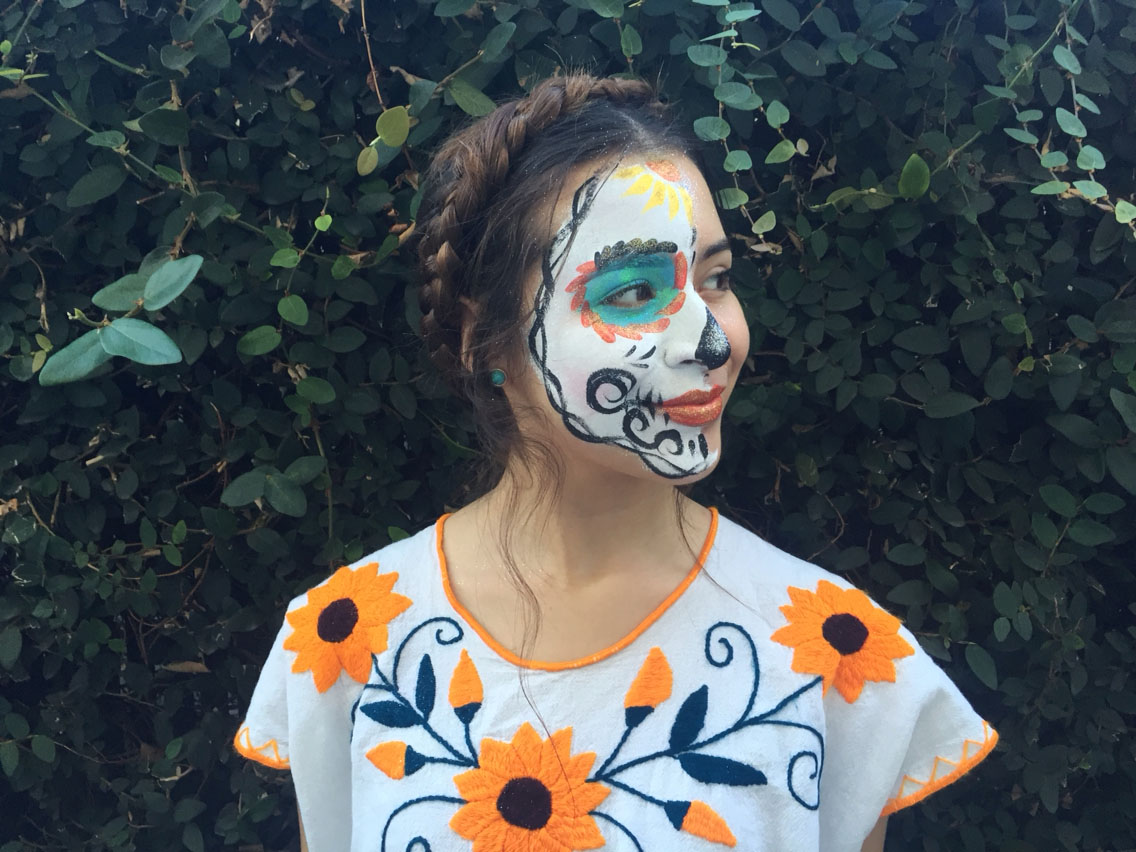Happiness, joy, laughter – these aren’t words typically associated with death. When Día de los Muertos rolls around at the end of October, vibrant sugar skulls and elaborate face painting typically come to mind. However, this traditionally Mexican holiday celebrated on Nov. 1-2 carries a rich depth of tradition beyond the scope of countless skull makeup tutorials we find on YouTube. Ironically, the Day of the Dead is a vivacious celebration of life in the face of death. It’s a chance for the living to honor their beloved deceased and, conversely, a time for the dead to awake and celebrate with the living.
Originating from the ancient rituals of indigenous Aztec communities, the Day of the Dead has garnered influences from Catholic Spanish conquistadores with its likeness to All Souls’ Day. However, common traditions are still performed all throughout Latin America, most prominently in Mexico.
A major component of these autumnal festivities is the creation of beautiful multi-tiered altars called ofrendas – or “offerings.” Ofrendas are intricately decorated with colorful tablecloths, cutout tissue paper crafts known as papel picado and most importantly, framed pictures of those who have died. Altars are thoughtfully built according to the individual being honored, so each item holds profound meaning. Families usually place their deceased loved ones’ favorite foods, which often include popular dishes like tamales, pan dulce (sweet bread) and pan de muerto (bread of the dead) on the altar. As for special treats, child spirits are gifted with their favorite toys whereas adult spirits receive alcoholic beverages to quench their thirst after a long journey from heaven. The finishing touches include marigolds called cempasuchil and several candles used to light the way as the spirits are welcomed home.


A particular tradition that may seem rather unusual to some is the visiting of graveyards on the night of Nov. 2. People sing, dance and enjoy live music as they visit the cemeteries of their beloved – a reflection of the simple joy associated with this holiday as people laugh heartily even amidst the inevitability of death. It’s for this reason that the skull – or, as they call it in Spanish, “calaca” – is a vital symbol for this holiday. The skull encapsulates the mortal duality of our human existence. Though we are alive, the captivating celebration of Día de los Muertos reminds us not to fear death, but to embrace our humanity while we can. Though our loved ones have passed, we have the power to keep their memory alive.
If you’d like to take part in the celebration, here are a few ways to have some fun while on campus:
- DIY avocado skulls: Want an alternative to sugar skulls? Try this cool DIY!
- Have a movie night with some friends and watch the Día de los Muertos-inspired animated movie “The Book of Life” (2014).
- Perhaps creating an altar is out of your reach, but you can easily make your own papel picado!

You’ll need:
- Tissue paper
- Pair of scissors
Instructions: Simply grab a sheet of tissue paper, fold it into fourths, cut out symmetric geometric shapes and unfold for an awesome design!
- On Oct. 27th, check out Stern Dining Hall for some delicious food!
- On Oct. 28th, check out El Centro’s Día de los Muertos celebration!
- On Sunday, Nov. 6, check out Mountain View’s first ever Día de los Muertos celebration from 1 p.m. to 4 p.m.!
Happy festivities!
Let Clarissa Gutierrez know how you plan on celebrating Día de los Muertos at cgutier ‘at’ stanford.edu.
